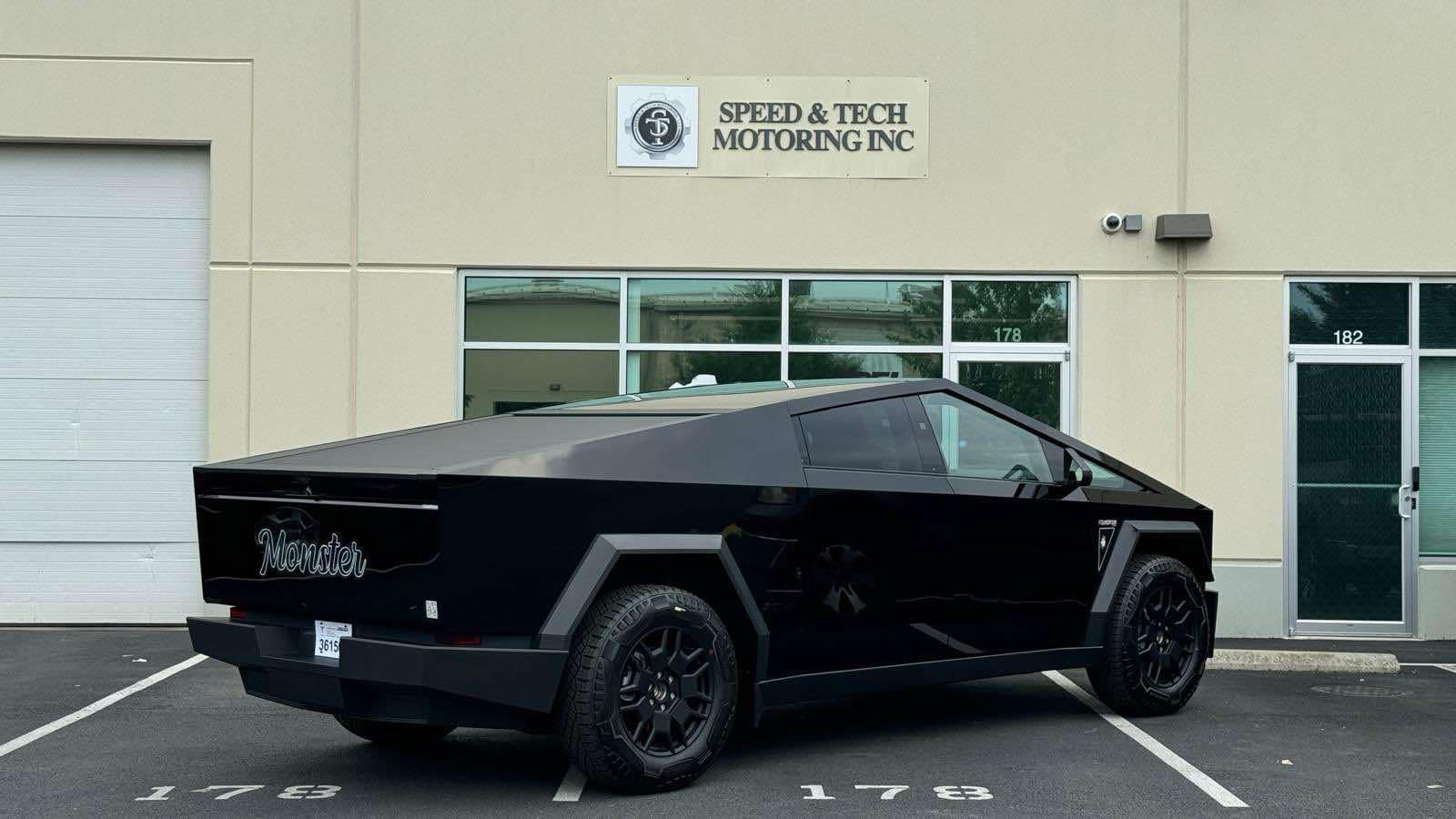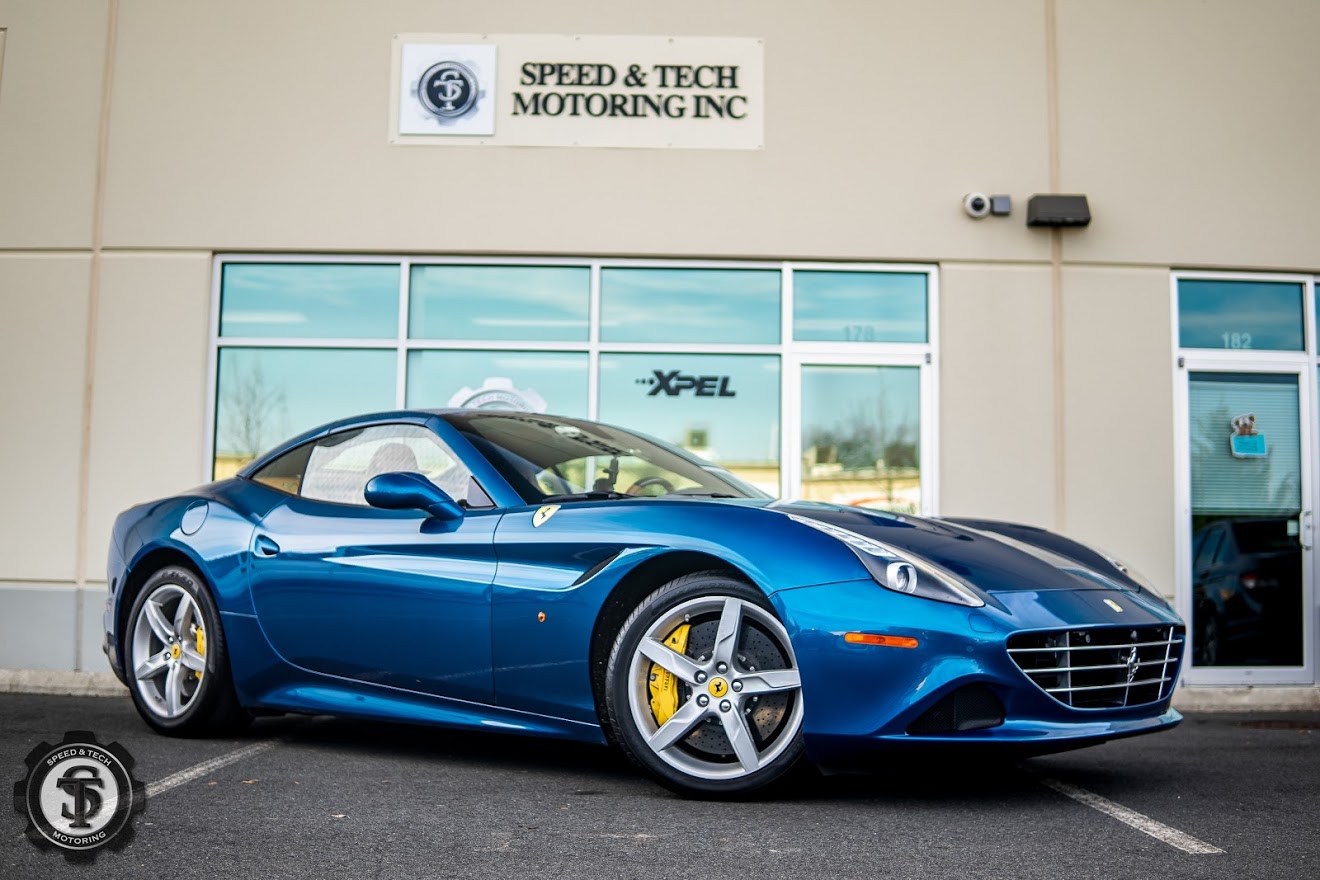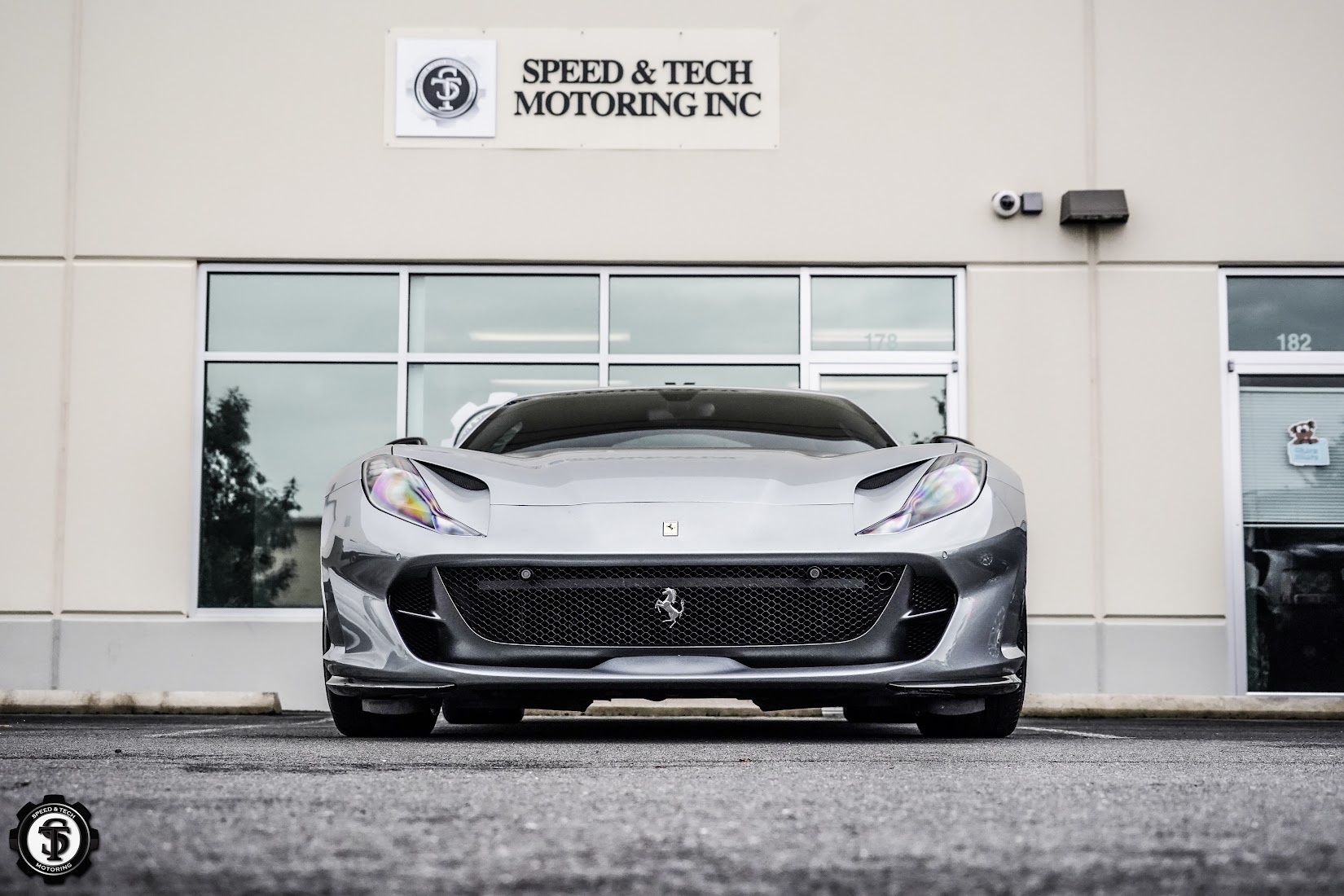Protecting your vehicle’s paint is one of the smartest investments you can make. Two popular options dominate the market: ceramic coating and paint protection film (PPF). Both offer excellent protection, but they work in completely different ways.
Choosing between ceramic coating and PPF can feel overwhelming. Each has unique strengths and ideal applications. Understanding these differences helps you make the right choice for your vehicle, budget, and lifestyle.
This guide breaks down everything you need to know about both options. We’ll explore how they work, what they protect against, and which situations favor each solution.
What Is Ceramic Coating?
Ceramic coating is a liquid polymer applied directly to your vehicle’s paint. Once cured, it forms a permanent bond with the factory clear coat. This creates an additional protective layer that’s incredibly hard and chemical-resistant.
How Ceramic Coating Works
The coating contains nano-ceramic particles that cross-link as they cure. This process creates a semi-permanent shell over your paint. The result is a surface that’s harder than your original clear coat.
Ceramic coatings are hydrophobic, meaning water beads up and rolls off easily. This property makes washing easier and helps prevent water spots. The smooth surface also resists dirt and grime buildup.
Key Benefits of Ceramic Coating
Enhanced Gloss and Depth: Ceramic coating amplifies your paint’s natural shine. Colors appear deeper and more vibrant. The glass-like finish creates a showroom appearance that lasts for years.
Chemical Resistance: The coating protects against bird droppings, tree sap, and road salt. These contaminants can’t bond to the slick ceramic surface. This prevents permanent staining and etching.
UV Protection: Ceramic coating blocks harmful UV rays that cause paint to fade. Your vehicle maintains its original color longer. This protection is especially valuable for red and black vehicles.
Easy Maintenance: The hydrophobic surface makes washing faster and easier. Dirt slides off with minimal effort. You’ll spend less time cleaning and more time enjoying your vehicle.
Scratch Resistance: While not scratch-proof, ceramic coating does resist light swirl marks. It’s harder than factory clear coat, providing an extra barrier against minor abrasions.
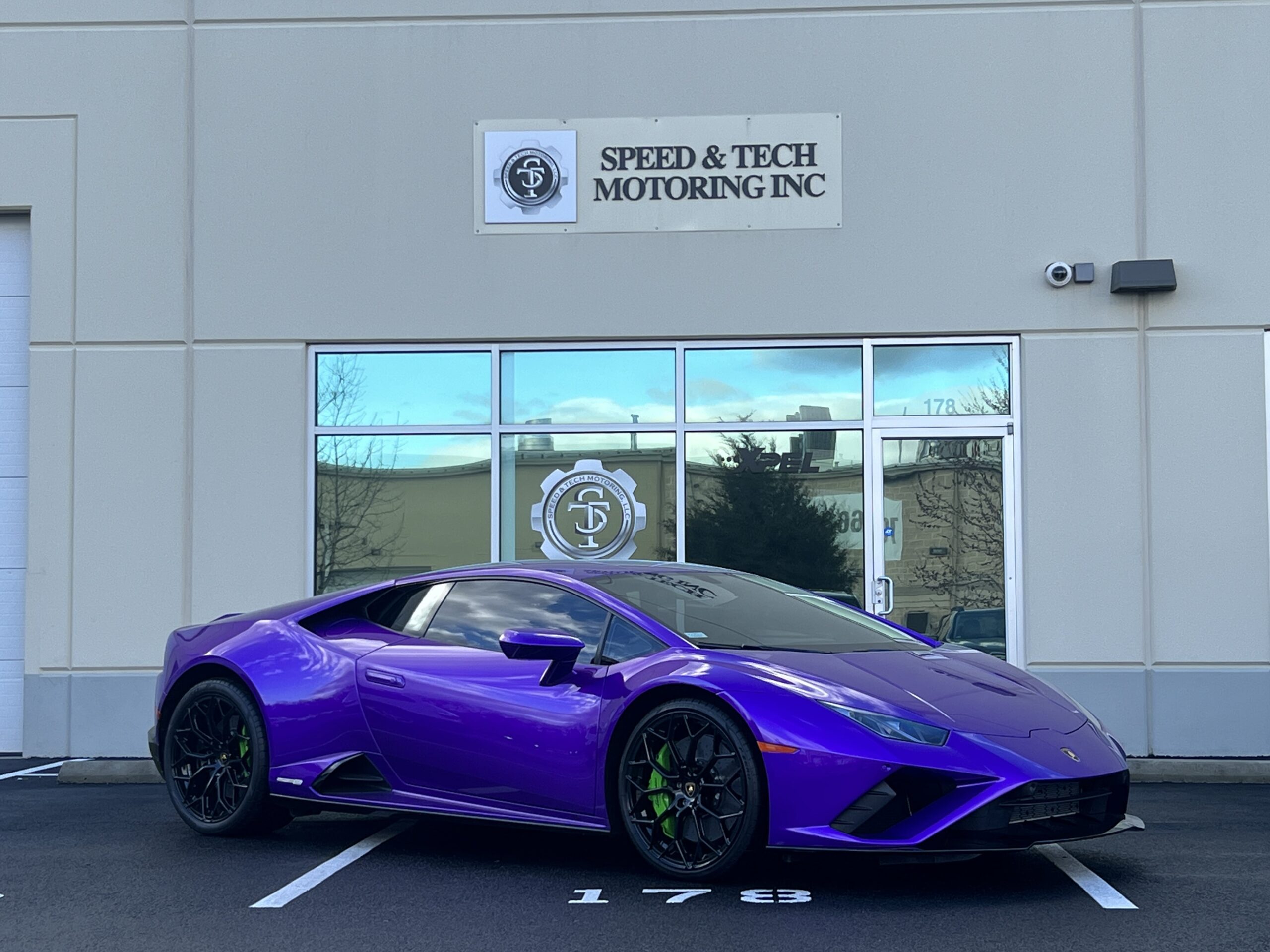
What Is Paint Protection Film (PPF)?
Paint Protection Film is a clear, thermoplastic urethane film applied to your vehicle’s painted surfaces. Originally developed for military helicopter blades, PPF has evolved into the ultimate paint protection solution.
How PPF Works
PPF creates a physical barrier between your paint and the outside world. The film absorbs impacts that would otherwise damage your paint. High-quality PPF also features self-healing properties.
When exposed to heat, minor scratches and swirl marks disappear from the film surface. This keeps your protection looking clear and new. The film is virtually invisible when properly installed.
Key Benefits of Paint Protection Film
Superior Impact Protection: PPF excels at stopping rock chips, road debris, and parking lot dings. The thick film absorbs these impacts before they reach your paint. This protection is unmatched by any other solution.
Self-Healing Technology: Minor scratches vanish when exposed to heat or warm water. This means your protection stays clear and effective for years. The self-healing feature maintains that invisible, factory-fresh appearance.
Comprehensive Coverage: PPF can protect entire vehicle sections or just high-impact areas. Popular applications include front bumpers, hoods, side mirrors, and door edges. Full-body protection is also available for ultimate coverage guide.
Removable Protection: Unlike ceramic coating, PPF can be removed without damaging your paint. This flexibility is valuable for leased vehicles or when you want to change protection options.
Invisible Protection: Quality PPF installation is virtually undetectable. Your vehicle maintains its original appearance while gaining superior protection. The film doesn’t alter paint color or texture.
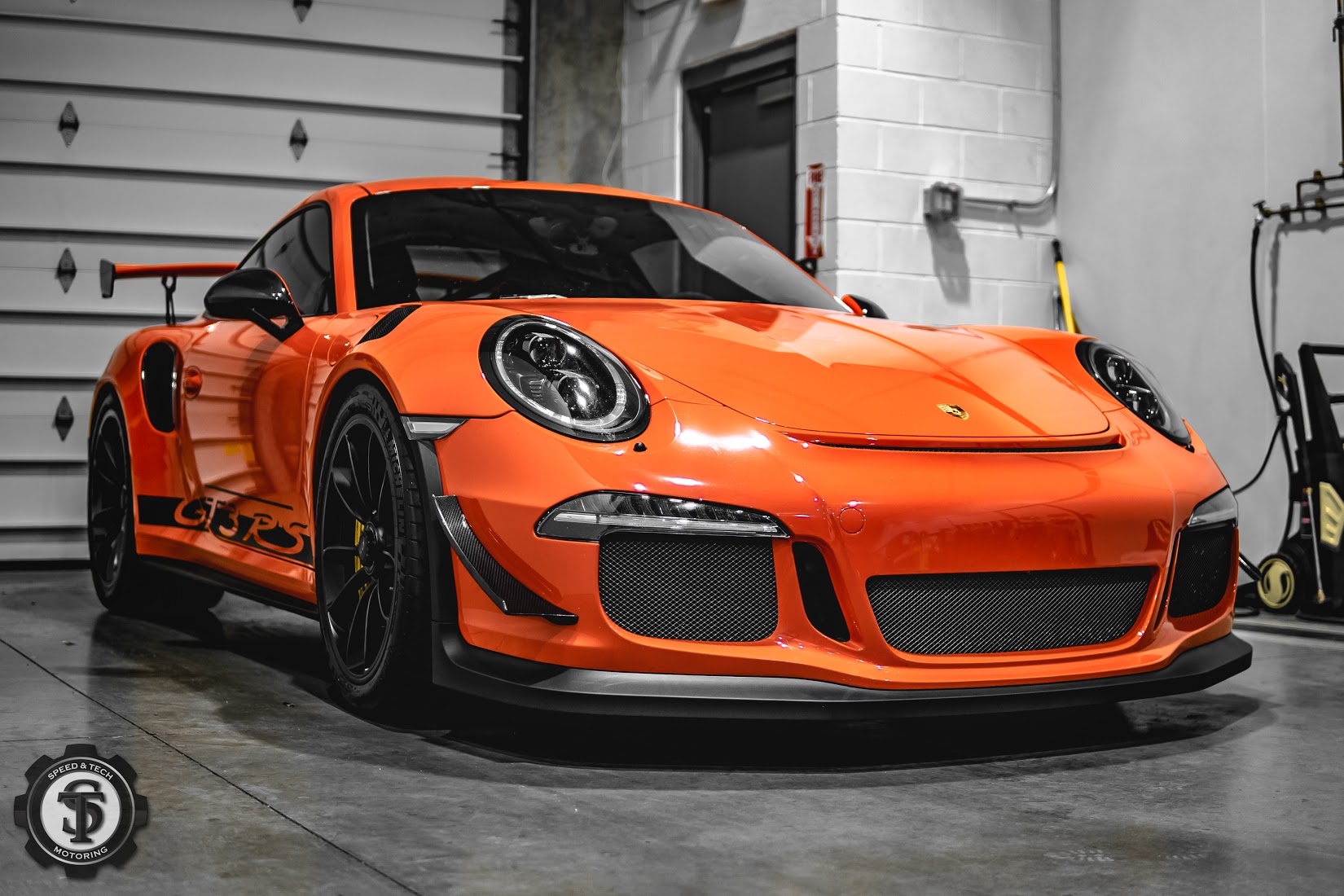
Direct Comparison: Ceramic Coating vs PPF
Protection Level
PPF offers superior physical protection against impacts and abrasions. It stops rock chips, key scratches, and parking lot damage that would penetrate ceramic coating. For vehicles facing harsh road conditions, PPF provides unmatched defense.
Ceramic coating excels at chemical protection and UV resistance. It prevents etching from bird droppings and protects against fading. However, it won’t stop physical impacts like rock chips.
Durability and Longevity
Quality ceramic coatings last 2-5 years depending on the product and maintenance. Professional-grade coatings can last even longer with proper care. The protection gradually diminishes over time.
PPF typically lasts 7-10 years with proper installation and care. The film maintains its protective properties throughout its lifespan. When it’s time for replacement, removal doesn’t damage the underlying paint.
Maintenance Requirements
Ceramic coating requires careful maintenance to preserve its properties. You must use pH-neutral soaps and avoid automatic car washes. Regular maintenance helps the coating last its full lifespan.
PPF is more forgiving in terms of maintenance. Normal washing won’t damage the film. You can even use automatic car washes without concerns. The self-healing properties help maintain appearance with minimal effort.
Cost Considerations
Ceramic coating is generally less expensive upfront. Professional installation costs vary based on the product quality and coverage area. DIY options exist but professional application ensures optimal results.
PPF requires a higher initial investment due to material and installation costs. The complex installation process demands specialized skills and equipment. However, the longer lifespan often provides better long-term value.
Installation Complexity
Ceramic coating application is more straightforward but still requires expertise. Proper surface preparation is crucial for optimal bonding. The liquid application allows for complete coverage of complex surfaces.
PPF installation is highly complex and requires specialized training. The film must be precisely cut and carefully applied to avoid bubbles or imperfections. This complexity makes professional installation essential.
When to Choose Ceramic Coating
Ceramic coating is ideal when you prioritize ease of maintenance and enhanced appearance. If your vehicle faces primarily environmental hazards like UV exposure, bird droppings, and water spots, ceramic coating provides excellent protection.
Choose ceramic coating if you want to enhance your vehicle’s gloss and depth. The coating amplifies paint appearance while providing solid chemical protection. It’s also the better choice for budget-conscious owners seeking quality protection.
Ceramic coating works well for garage-kept vehicles that don’t face heavy road debris. It’s perfect for show cars, weekend drivers, and vehicles used primarily for city driving.
When to Choose Paint Protection Film
PPF is the clear winner for maximum physical protection. If your vehicle faces highway driving, construction zones, or harsh road conditions, PPF provides unmatched defense against impacts.
Choose PPF for high-value vehicles where paint damage would be costly to repair. Luxury cars, sports cars, and limited-edition vehicles benefit most from PPF’s superior protection level.
PPF is ideal for daily drivers facing varied road conditions. The self-healing properties keep the protection looking new despite regular use. It’s also perfect for leased vehicles due to its removable nature.
Can You Use Both Together?
Many owners combine PPF and ceramic coating for ultimate protection. PPF goes on first to provide physical protection, then ceramic coating is applied over the film. This combination offers the benefits of both products.
The ceramic coating enhances the PPF’s gloss and makes it easier to clean. It also provides additional chemical protection and hydrophobic properties. This layered approach represents the pinnacle of paint protection.
However, combining both products significantly increases cost and complexity. It’s typically reserved for high-end vehicles where maximum protection justifies the investment.
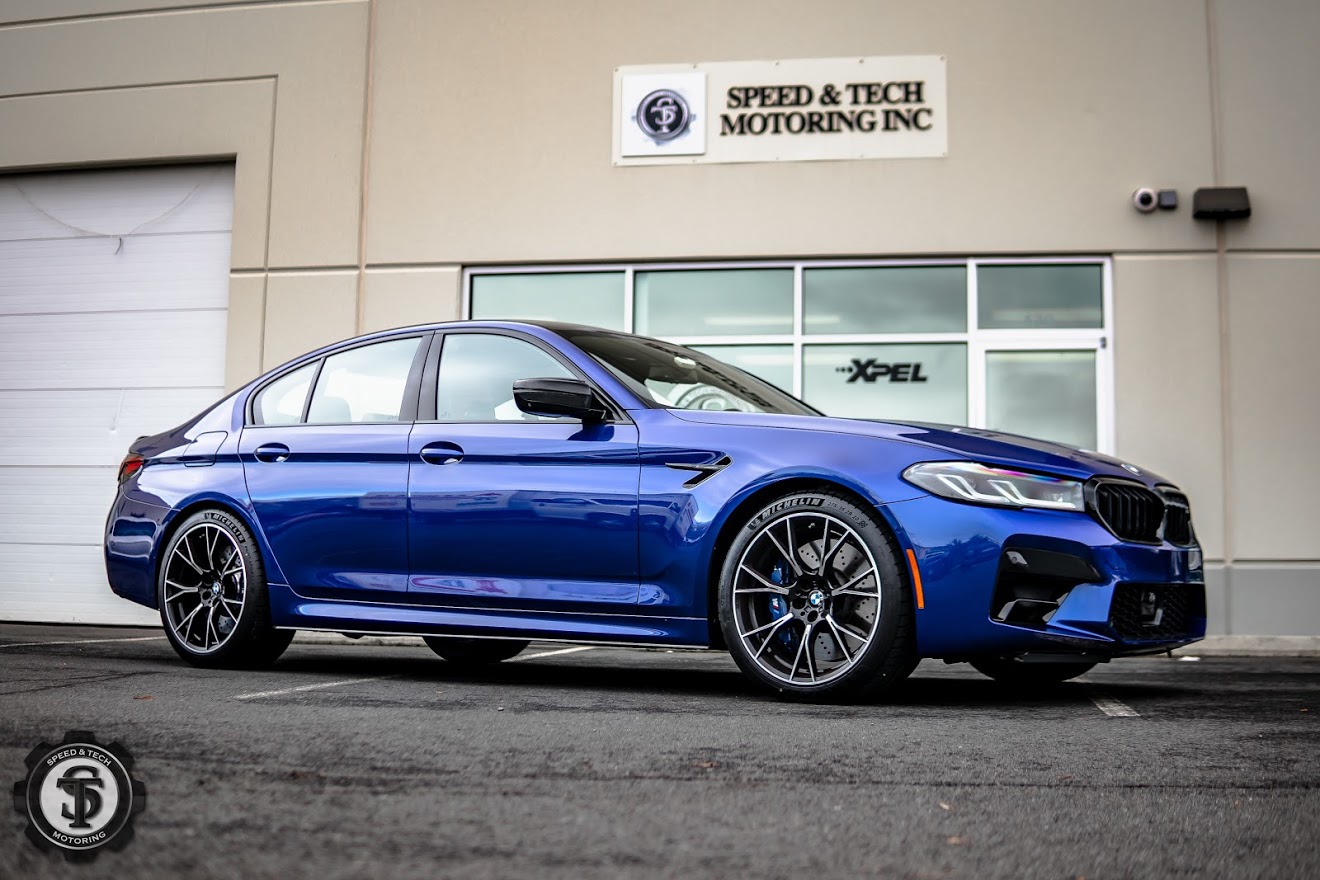
Making Your Decision
Consider your driving habits, environment, and budget when choosing between options. Highway commuters benefit most from PPF’s impact protection. City drivers might find ceramic coating adequate for their needs.
Think about your long-term plans for the vehicle. PPF offers better protection for vehicles you plan to keep long-term. Ceramic coating might suffice for shorter ownership periods.
Factor in maintenance preferences and capabilities. Ceramic coating requires more careful maintenance practices. PPF is more forgiving but costs more initially.
Frequently Asked Questions
Does ceramic coating prevent rock chips?
No, ceramic coating cannot prevent rock chips or deep scratches. It provides chemical protection and light scratch resistance but won’t stop physical impacts. For rock chip protection, PPF is the better choice.
Can PPF be applied over ceramic coating?
PPF should be applied directly to paint, not over ceramic coating. The coating can interfere with the film’s adhesion. If you want both, apply PPF first, then ceramic coating over the film.
How long does each option take to install?
Ceramic coating installation typically takes 1-2 days including cure time. PPF installation can take 2-5 days depending on coverage area and vehicle complexity. Both require proper surface preparation time.
Will either option affect my vehicle’s warranty?
Neither ceramic coating nor PPF should affect your vehicle’s warranty when professionally installed. Both are applied over existing paint without altering the underlying surface. Always verify with your dealer if concerned.
Can I wash my car normally with either protection?
PPF allows normal washing including automatic car washes. Ceramic coating requires pH-neutral soaps and gentler washing methods. Avoid harsh chemicals and abrasive materials with both options.
What happens if the protection gets damaged?
Damaged ceramic coating typically requires complete removal and reapplication of the affected area. PPF can often be repaired by replacing just the damaged section. This makes PPF repairs more cost-effective.
Do I need to wax after applying either protection?
Neither ceramic coating nor PPF requires traditional waxing. In fact, wax can interfere with ceramic coating’s hydrophobic properties. Both provide their own protective and aesthetic benefits.
How do I maintain each type of protection?
Ceramic coating needs regular pH-neutral washing and periodic maintenance products. PPF requires normal washing and benefits from occasional inspection for damage. Both last longer with proper care.
Conclusion
Both ceramic coating and paint protection film offer excellent protection for your vehicle’s paint. Ceramic coating excels at chemical protection, UV resistance, and enhancing appearance. PPF provides superior physical protection against impacts and road debris.
Your choice depends on your specific needs, driving conditions, and budget. Consider ceramic coating for enhanced gloss and chemical protection. Choose PPF for maximum physical protection against road hazards.
Many vehicle owners find that combining both options provides ultimate protection. While more expensive, this approach offers comprehensive defense against all types of paint damage.
Ready to protect your vehicle with premium ceramic coating or paint protection film? Speed & Tech Motoring in Sterling, VA specializes in XPEL Fusion Plus ceramic coatings and XPEL Paint Protection Film. Our expert team will assess your needs and recommend the perfect protection solution for your luxury vehicle. Contact us today to schedule your consultation and discover why discerning Sterling area drivers trust us with their most valuable automotive investments.

